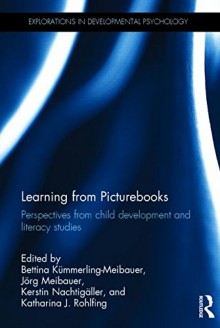Learning from Picturebooks: Perspectives from child development and literacy studies. (Explorations in Developmental Psychology)
Picturebooks, understood as a series of meaningful text-picture relations, are increasingly acknowledged as an autonomous sub-genre of children’s literature. Being highly complex aesthetic products, their use is deeply embedded in specific situations of joint attention between a caregiver and a...
show more
Picturebooks, understood as a series of meaningful text-picture relations, are increasingly acknowledged as an autonomous sub-genre of children’s literature. Being highly complex aesthetic products, their use is deeply embedded in specific situations of joint attention between a caregiver and a child. This volume focuses on the question of what children may learn from looking at picturebooks, whether printed in a book format, created in a digital format, or self-produced by educationalists and researchers.Interest in the relationship between cognitive processes and children’s literature is growing rapidly, and in this book, theoretical frameworks such as cognitive linguistics, cognitive narratology, cognitive poetics, and cognitive psychology, have been applied to the analysis of children’s literature. Chapters gather empirical research from the fields of literary studies, linguistics and cognitive psychology together for the first time to build a cohesive understanding of how picturebooks assist learning and development.International contributions explore: language acquisition the child’s cognitive development emotional development literary acquisition ("literary literacy") visual literacy. Divided into three parts considering symbol-based learning, co-constructed learning, and learning language skills, this cross-disciplinary volume will appeal to researchers, students and professionals engaged in children’s literature and literacy studies, as well as those from the fields of cognitive and developmental psychology, linguistics, and education.
show less

